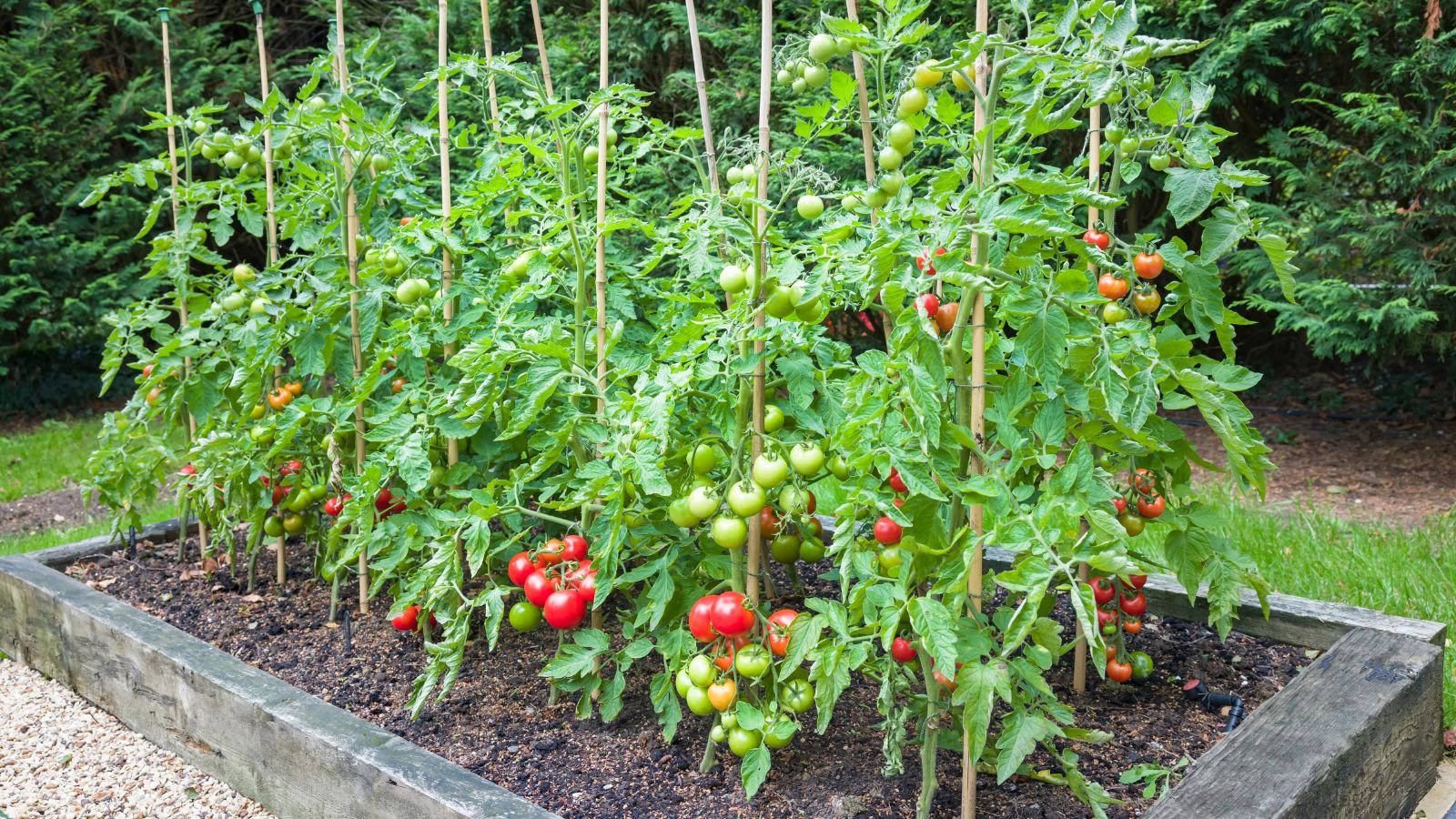Introduction
Growing tomatoes in an elevated garden bed is an excellent way to maximize space, improve soil conditions, and boost tomato plant health. Elevated garden beds provide better drainage, soil warmth, and easier access, making them ideal for growing juicy, flavorful tomatoes. Whether you are a beginner gardener or an experienced grower, understanding how to optimize your elevated bed setup can lead to a bountiful tomato harvest.
This article covers everything you need to know about growing tomatoes in elevated garden beds. From selecting the right bed materials to soil preparation, planting techniques, and ongoing care, you’ll gain expert insights and actionable tips to enhance your tomato-growing success.
Why Choose an Elevated Garden Bed for Tomatoes?
Improved Soil and Drainage
Elevated garden beds allow you to control soil quality precisely. Tomatoes thrive in well-drained, nutrient-rich soil. Raised beds prevent waterlogging, which is critical because soggy soil can cause root rot and other diseases.
Warmer Soil Temperatures
Since the soil in elevated beds warms faster in spring, tomato plants can get a head start. Early warming supports stronger growth and an earlier fruiting period.
Easier Maintenance and Pest Control
Elevated beds reduce the need for bending and kneeling, making planting, pruning, and harvesting easier. They also help deter some ground pests and reduce weed competition.
Preparing Your Elevated Garden Bed for Tomatoes
Choosing the Right Materials
Common materials for raised beds include cedar, redwood, composite wood, and metal. Cedar and redwood are naturally rot-resistant and safe for vegetable gardening.
Optimal Bed Size and Depth
Tomatoes need plenty of root space. Aim for a bed that is at least 12-18 inches deep and about 3-4 feet wide to allow easy access from both sides.
Selecting Quality Soil Mix
Use a blend of organic compost, well-aged manure, and high-quality garden soil. A recommended mix is:
– 40% compost
– 30% topsoil
– 30% coconut coir or peat moss
This combination ensures good drainage and nutrient availability.
Soil pH and Fertility
Tomatoes prefer slightly acidic soil with a pH between 6.0 and 6.8. Test your soil pH and amend with lime or sulfur as needed. Incorporate balanced organic fertilizer rich in phosphorus and potassium to encourage healthy flowering and fruiting.
Planting and Caring for Tomatoes in Elevated Beds
Selecting Tomato Varieties
Choose disease-resistant tomato varieties suitable for your climate. Indeterminate varieties like ‘Big Boy’ or ‘Celebrity’ produce fruit throughout the season, while determinate types like ‘Roma’ yield a concentrated harvest.
Planting Tips
- Plant seedlings deep, burying part of the stem to encourage strong root development.
- Space plants 18-24 inches apart to promote airflow and reduce disease risk.
Watering Practices
Consistent moisture is key. Use drip irrigation or soaker hoses to keep soil evenly moist without wetting foliage.
Supporting Your Plants
Use sturdy stakes, cages, or trellises to support tomato plants. This prevents sprawling, reduces disease risk, and improves sun exposure.
Mulching Benefits
Apply a 2-3 inch layer of organic mulch like straw or shredded leaves to retain moisture, suppress weeds, and regulate soil temperature.
Common Challenges and Solutions for Elevated Bed Tomatoes
Preventing Diseases
Practice crop rotation and avoid planting tomatoes in the same bed year after year. Remove diseased leaves promptly and apply organic fungicides if needed.
Managing Pests
Common pests include aphids, tomato hornworms, and whiteflies. Introduce beneficial insects like ladybugs and use neem oil sprays as organic control methods.
Nutrient Deficiencies
Yellowing leaves may indicate nitrogen deficiency; blossom end rot points to calcium shortage. Regularly feed tomatoes with balanced organic fertilizers and use foliar sprays of calcium if necessary.
Real-World Success: Case Study
A community garden in Portland, Oregon, switched to elevated beds for their tomato crop. They reported a 30% increase in yield and fewer pest problems after using raised cedar beds with custom soil mixes. Gardeners highlighted easier maintenance and healthier plants as key benefits.
Conclusion
Growing tomatoes in elevated garden beds offers numerous advantages including better soil control, improved plant health, and easier maintenance. By selecting the right materials, preparing nutrient-rich soil, choosing suitable tomato varieties, and implementing proper care routines, gardeners can enjoy abundant and flavorful tomato harvests.
Start your elevated bed tomato garden today and experience the rewarding process of nurturing these beloved fruits with expert techniques. With patience and attention, your elevated garden bed will become a thriving tomato haven that boosts both your gardening confidence and your kitchen’s fresh produce supply.
